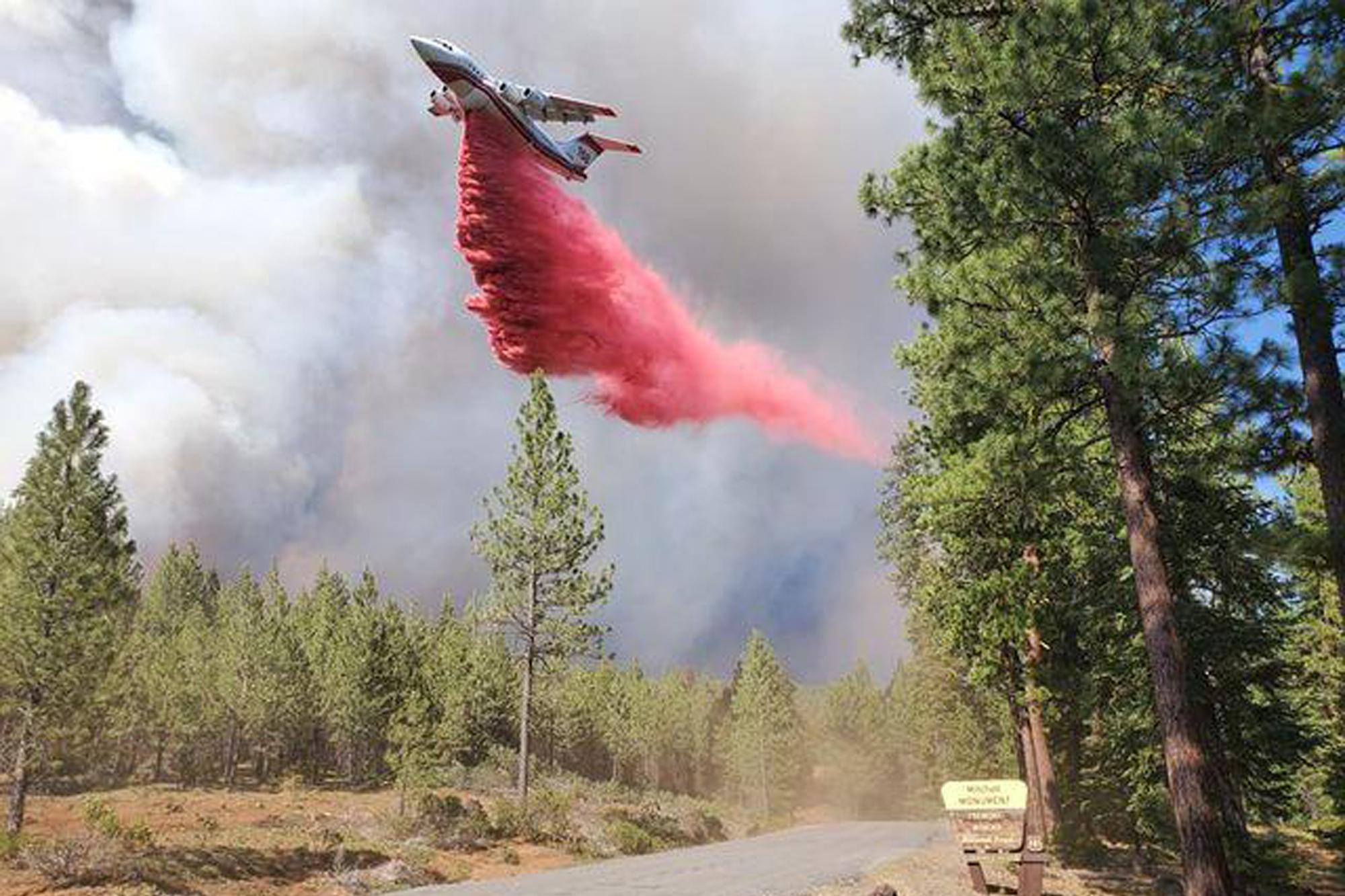
GARDNERVILLE, Nev. (AP) — A Northern California wildfire crossed into Nevada, prompting new evacuations, but better weather has been helping crews battling the nation’s largest blaze in southern Oregon.
The Tamarack Fire south of Lake Tahoe had burned more than 68 square miles (176 square kilometers) of timber and head-high chaparral in national forest land. It erupted on July 4 and was one of nearly two dozen blazes sparked by lightning strikes.
More than 1,200 firefighters were battling the Alpine County blaze, which has destroyed at least 10 buildings, forced evacuations in several communities and had closed parts of U.S. 395 in Nevada and California. Fire officials expected active or extreme fire behavior on Thursday, which could see 14-mph winds and temperatures approaching 90 degrees.
A request for voluntary evacuations was also issued for portions of Douglas County, Nevada. An evacuation center was set up at a community center in Gardnerville, Nevada.
Evacuee Morgana-Le-Fae Veatch said she already had boxed up most of her belongings because she is starting community college next week but her parents lost their house in a 1987 blaze.
“So this has been really, really stressing to them,” she said.
Meanwhile, Oregon on Wednesday banned all campfires on state-managed lands and in state campgrounds east of Interstate 5, the major highway that is commonly considered the dividing line between the wet western part of the state and the dry eastern half.
The nation’s largest wildfire, Oregon’s Bootleg Fire, grew to 618 square miles (1,601 square kilometers) — just over half the size of Rhode Island.
However, authorities said lower winds and temperatures allowed crews to improve fire lines. The fire also was approaching an area burned by a previous fire on its active southeastern flank, raising hopes that lack of fuel could reduce its spread.
The Oregon fire, which was sparked by lightning, has ravaged the sparsely populated southern part of the state and had been expanding by up to 4 miles (6 kilometers) a day, pushed by strong winds and critically dry weather that turned trees and undergrowth into a tinderbox.
Fire crews have had to retreat from the flames for 10 consecutive days as fireballs jump from treetop to treetop, trees explode, embers fly ahead of the fire to start new blazes and, in some cases, the inferno’s heat creates its own weather of shifting winds and dry lightning. Monstrous clouds of smoke and ash have risen up to 6 miles (10 kilometers) into the sky and are visible for more than 100 air miles (161 kilometers).
The blaze, which is being fought by more than 2,200 people, is about one-third contained.
At least 2,000 homes were ordered evacuated at some point during the fire and an additional 5,000 were threatened. At least 70 homes and more than 100 outbuildings have burned, but no one is known to have died.
Extremely dry conditions and recent heat waves tied to climate change have made wildfires harder to fight. Climate change has made the West much warmer and drier in the past 30 years and will continue to make weather more extreme and wildfires more frequent and destructive.
The remainder of this article is available in its entirety at CBN

